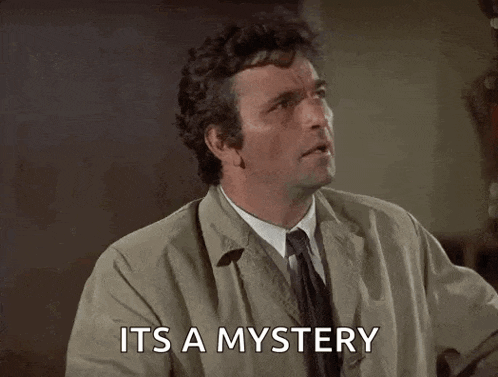- Trills on a Tuesday
- Sep 24
- 3 min read
Updated: Sep 25

We had a most challenging warm-up with the Grand Old Duke of York! Singing it with ‘up’ missing and then ‘down’ missing and then ‘up’ and ‘down’ missing was not easy! It certainly gets your brain working and coordinating your voice to sing at the right time!
Fairytale of New York moved on to the part where it goes from the really quiet reflective stage to the lively jig. The rhythm of the phrasing is important: ‘… wind goes right through its no place….’ ‘through its’ is very quick and sounds like one word ‘throughits no place ….’
The Irish lilt sound comes into play with ‘for’ having three notes in ‘waiting for me’.
There is a surprise in this song as the Sops don’t always have the tune! ‘Sinatra was singing ….’ Starts with the tune and then goes into harmony, so Sops be prepared!
Altos be bold and sing out confidently. You are the linchpin to the In Flagrante sound!
Happy Together needs to be bright and sparkly with an equal sound in all parts (altos sing up and Sops and Basses tone it down). Make the ‘ther’ on ‘together’ bright with raised eyebrows!
Diamonds are Forever – in the part ….’desert me..’ put the ‘t’ onto ‘me’ as in ‘deser-tme’
And ‘when love is goooooone’ feel it rather than trying to sing every note! After the long ‘gone’ don’t forget to come back in again with the next phrase. Don’t let it take you by surprise!
Lean on Me is a song written and recorded by American singer-songwriter Bill Withers. Lean on Me” already carries so much heart as Bill Withers wrote it from a place of genuine empathy and community. Having John Legend, Stevie Wonder, and Bill Withers together makes it especially poignant.
Bill Withers' childhood in the coal mining town of Slab Fork, West Virginia, was the inspiration for this song which he wrote for his album Still Bill after he had moved to Los Angeles, and found himself missing the strong community ethic of his hometown. He had lived in a decrepit house in the poor section of his town. He made an effort to keep the lyrics simple
We first performed this song with the arrangement by Elliot Clay in 2018 and again in 2023.
Emphasise the start of each phrase. There a few surprises in this song. Sops, Tenors and Basses be bold with your ‘Carry on for’.
Altos this is your moment to shine singing the words out boldly while all the other parts are ‘Oohing’ underneath you.
For any of you who have previously sung this, you know Sops and Altos have the tricky timing of ‘Might’. The Tenors and Basses sing ‘I just might’ and then you quickly come in with your ‘might’ so it’s like a little fast echo.
We finished peacefully with Peace on Earth which is slow, so don’t forget to breathe after the phrases before singing ‘Peace on earth’. This is the opposite of what we are used to as we are usually told not to breathe!
We are still working on the mystery of Zoom settings and are determined to get it up and running. WE thank you for your patience in this rather long process!
Keep up the good work and look out for the updates in Dropbox.

Zoom it's a mystery
- Trills on a Tuesday
- Sep 17
- 3 min read
Wanted! Soloist for the circle game. There is an opportunity for choir members to put themselves forward at the beginning of the rehearsal next week if they would like to sing a solo/duet. Alternatively, the verses may be sung by the different voice parts.
Changes in our membership with a bitter sweet very funny and sad farewell resignation letter from Michael Daly, who has decided it is time to leave us, although he will stay in touch and, hopefully, come to our concerts. His presence and bass voice on a Tuesday night will be sadly missed.
As we get used to a new style of Musical Director, there will be changes to the repertoire.
Keep your eyes open for these in Dropbox this week and the relevant backing tracks.
With the change of style, we have only completed one song, which is the Finnish
Reindeer Call, Ole le Loyla. This is a song used to summon reindeer. It's Close, and who doesn't love the Kinks?
It is familiar to some choir members who have performed this in 2022. It is sung in three parts and can be done with the Sops starting and singing it all the way through and the second time round the Altos join in and the third time the Tenors and Basses join in.
An alternative is to have the Sops sing the first line and the Altos singing their first line as the Sops sing their second line and the Tenors and Basses joining in with their first line as the Sops sing their third line and the Altos sing their second line and just keep going!
We revisited Fairytale of New York and Downtown and will hopefully complete them next week.
Happy Together is a song written by Garry Bonner and Alan Gordon and recorded by the American rock band the Turtles. Bonner and Gordon composed the song while members of The Magicians. Its lyrics are about an unrequited love, despite the joyous sound. The composition was rejected by many artists, before being accepted by The Turtles, who were passing through a lowdown in their career.
In Flagrante Choir sung the beginning of this song confidently as this is one from our back catalogue and the majority of us have sung it previously in 2023, so it was fairly fresh in our memories. We will probably complete this song next week.
The Circle Game is a song by Canadian singer-songwriter Joni Mitchell composed in 1966. It is one of her most-covered songs and was originally recorded by Ian & Sylvia in 1967, and then by Buffy Sainte-Marie the same year,
The song shares a title with an award-winning collection of poetry from 1964 by fellow Canadian Margaret Atwood. However, Joni Mitchell has said that The Circle Game was written as a response to the song Sugar Mountain by Neil Young, whom she had befriended on the Canadian folk-music circuit in the mid-1960s. Neil Young wrote Sugar Mountain in 1964 on his 19th birthday, lamenting the end of his teenage years: "You can't be 20 on Sugar Mountain". The Circle Game offers a more hopeful conclusion: "So the years spin by and now the boy is 20 / Though his dreams have lost some grandeur coming true / There'll be new dreams, maybe better dreams and plenty / Before the last revolving year is through."

The song inspired David Clayton-Thomas when he was writing Blood, Sweat & Tears' 1969 hit Spinning Wheel. The line "The painted ponies go up and down" gave him the idea to write "Ride a painted pony let the spinnin' wheel spin"
In Flagrante Choir sang this in the Summer Concert 2022. Alternatively, the verses may be sung by the different voice parts.
Keep a positive attitude, even if results don’t seem to be occurring as quickly as you want them to, we will get there!

🎶 Choir Blog Update
Another busy rehearsal this week – we’ve been polishing up some of our new pieces and dusting off a few old favourites. 🎶
Keep an eye on the Dropbox – you’ll find some shiny new songs in there, as well as a few golden oldies. Next week we’ll be diving into The Circle Game and, true to In Flagrante style, singing Happy Together a couple of blasts from the past. Can’t wait!
Walking in the Air
We began by returning to Walking in the Air, picking up where we left off last week. This piece requires a truly choral sound, characterised by long, even phrases and careful blending. Sopranos and Altos sang softly, allowing Tenors and Basses to shine through underneath. Particular care was given to the phrases “On across the world” and “believe their eyes” — both of which must stay clean and bright, with no sliding!
The Altos worked on the long “o” vowel in “open mouthed”, while the final word “eyes” was kept short by everyone. It’s a challenging piece, but one that grows more rewarding each week.
Diamonds Are Forever
Next came a recap of Diamonds Are Forever. We revisited earlier work on phrasing and rhythm, paying special attention to the triplets in “fear that they might”. The Altos tackled their syncopated line in “Touch it, stroke it and address it” — no small task, but sounding ever more confident.
Downtown
One of the highlights of the evening was starting work on Downtown, written and produced by Tony Hatch in 1964 and made famous by Petula Clark. The song went on to become an international hit and has since been covered by countless artists, from Dolly Parton to Frank Sinatra.
Hatch himself recalled that the inspiration struck during his first trip to New York City: while standing on a street corner near Times Square, he watched the neon signs flicker on — and the melody came to him almost instantly.
In our arrangement, Sopranos carry the melody, while Altos, Tenors, and Basses provide rhythmic backing. A fun twist comes with the words “city” and “pretty”: Sopranos sing them quickly, while the lower parts sustain them as two long notes. The result already feels lively and dynamic.
Fairytale of New York
We also began work on Fairytale of New York, the Pogues’ classic Christmas ballad written by Jem Finer and Shane MacGowan, featuring Kirsty MacColl. First released in 1987 after a long and troubled development, it has since become one of the UK’s most enduring festive songs, re-entering the charts almost every year since 2005.
Our version has been specially arranged to remove potentially offensive language while keeping the spirit and rhythms of the original. It begins with a very soft opening, builds to a crescendo on “Dew”, then falls back again to a more reflective sound. Even in its early stages, it’s already proving to be a moving and atmospheric addition to our Christmas set.
Looking Ahead
As always, our rehearsals are about more than just learning notes — they’re about listening, blending, and supporting each other. Each week brings progress, and it’s exciting to see these songs taking shape.
We’ll keep listening to our rehearsal tracks during the week so we can dive straight back in next time. With every session, the music feels brighter, stronger, and more connected.
Can we ask if you need to get in touch with one of us. Can you please email info@inflagrantechior.com and one of us will get back to you.









